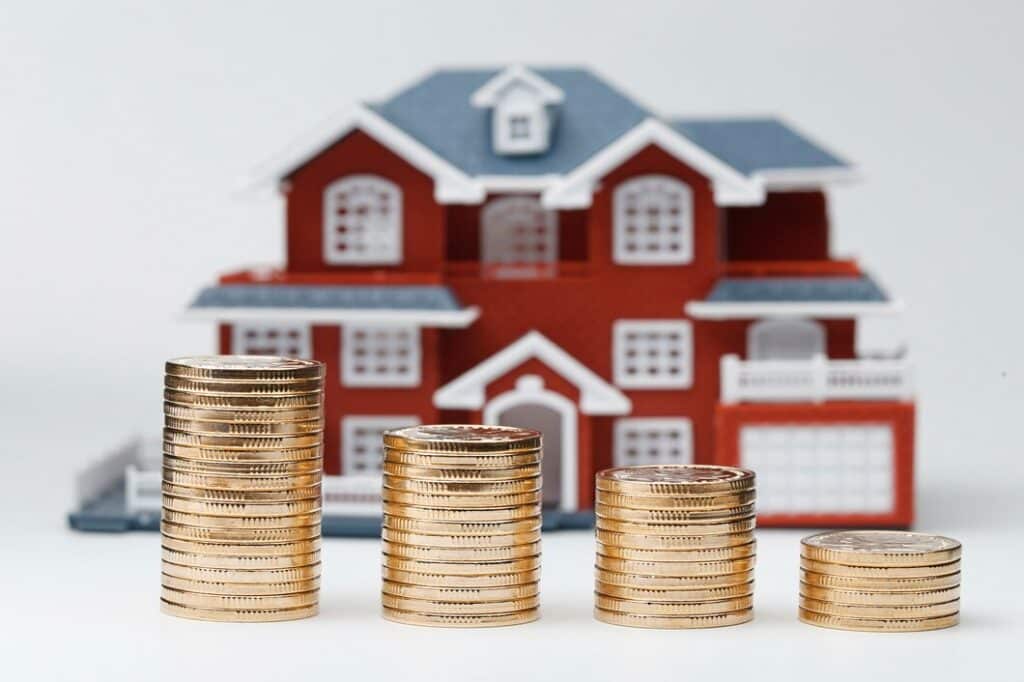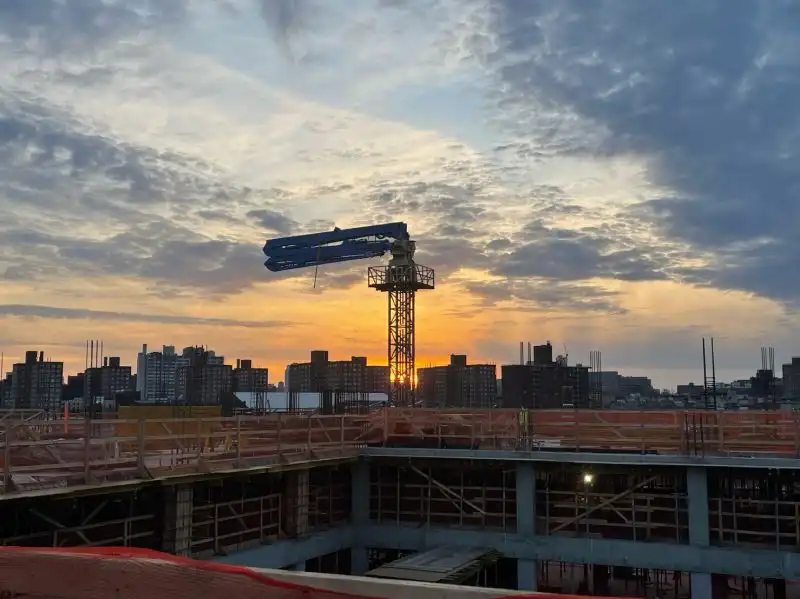How Much Does It Cost to Build a House in 2025?

Market progress and economic shifts have significantly raised construction expenses up to 2025. Multiple factors consisting of increasing material expenditures alongside labor shortages together with supply chain disruptions create difficulties in maintaining project budgets. Sustainable building demands and rising interest rates impact the total cost structure of future construction developments. A detailed analysis of how much does it cost to build a house is crucial for new homeowners to avoid unexpected expenses. Cost management and budgets become more efficient for developers who discover their key expenses through identification of primary cost elements such as labor costs and permits and material and equipment costs. The awareness of current market trends helps home builders together with investors to operate the market efficiently while they prepare budgets strategically to maintain project profitability even with increasing costs. Average Cost to Build a House in 2025 Quality house building in 2025 typically costs between $180 to $250 for each square foot according to location combined with materials and finish choices. Householders building a 2000-square-foot house need to allocate $360,000 to $500,000 based on average figures. An 800-square-foot house is a great choice for small families or individuals who want to downsize. Regional Variations: Key Factors Affecting House Construction Costs in 2025 How much does it cost to build a house depends on various factors like location, materials, and design complexity. Project planning and budgeting require knowledge of these cost drivers to succeed. The main drivers behind construction spending during this year include the following factors: Material Costs: The rise in basic construction materials causes their prices to keep increasing. Increasing demand drives up the prices of concrete and steel together with the recent lumber price rise stemming from supply chain disruptions. Additionally, eco-friendly materials like recycled steel and sustainable wood alternatives are more expensive but contribute to lower long-term maintenance costs. Labor Costs: Due to a severe lack of qualified workers labor expenses have experienced continuous hourly wage increases. Higher fees paid to electricians along with plumbers and masons drive up construction expenses because they constitute sought-after trades. Land Prices: The value of land continues to rise based on its physical position in a market. The demand for restricted urban land results in rising prices while suburban land remains affordable until infrastructure expenses rise. Permits & Regulations: Stricter building codes, especially those related to environmental sustainability and energy efficiency, are adding to compliance costs. Technology Integration: The implementation of smart house capabilities along with automatic control systems and energy-saving technology drives up first-time construction expenditure though it provides lasting budget benefits. House Building Cost per Square Foot The average building cost per square foot in 2025 is estimated to be between $125 and $300, influenced by factors like location, materials, and labor costs. Cost Breakdown: Building a House in 2025 House construction during 2025 demands complete knowledge of how building costs spread through each building phase. House plans with cost to build can help you estimate the financial commitment before starting a construction project. All construction steps include various components that determine total project expenditures starting from site preparations right through luxury feature installation. The following breakdown details essential expenditure zones during the building a house Site Preparation Constructing a home at its earliest stage requires land clearing and grading that depends on property dimensions and existing property state. The price of utility connections including water supply and electricity along with sewage access depends heavily on the location where the property is situated. Soil testing combined with inspections become essential to make sure that the foundation remains secure and avoid future problems particularly within areas classified as problematic because of ground movement. Foundation Among all the structural components of a house the foundation stands as the most essential element. Home foundation costs differ according to the selection between basic slab foundations or crawl spaces or full basement foundations. The construction of foundation systems that involve multiple layers needs reinforced concrete together with earthquake and severe weather defenses for locations where such dangers exist. Framing A home construction estimator can provide accurate pricing for each phase including framing of the building process. Due to market fluctuations lumber costs exceed steel framing prices during multiple years. Costs of materials along with labor expenses will be affected by the framing method selected between wood and steel. Exterior sheathing together with structural steelwork heightens expenses because they establish home stability through structural integrity. Exterior Finishes Different roofing products include asphalt shingles which cost less and metal and solar shingles which cost more. A roof’s selection pattern directly influences overall expenses and prolonged energy sustainability. Energy-efficient double glazing and advanced insulation require extra expense but they remain essential for comfort maintenance alongside reduced energy usage through windows and doors. Major Systems Installation Essential systems installation which includes HVAC plumbing and electrical constitutes a major portion of total spending. Premium HVAC systems equipped with heat pumps alongside smart thermostatic controls give energy-saving capabilities though their installation costs are elevated. The implementation of modern PEX pipes or the use of tankless water heaters increases project costs at the start of construction. Interior Finishes The point where aesthetic design comes together with practical requirements exists in interior finishes selection. Engineered wood and polished concrete belong to the group of high-end flooring materials which lead to substantial cost increases. The installation of quartz or recycled materials for cabinetry and countertops will raise prices due to their fashionable sustainable and upmarket specifications. Stage of Construction Estimated Cost Range Site Preparation $2,000 – $10,000 Foundation $10,000 – $30,000 Framing $30,000 – $80,000 Exterior Finishes $20,000 – $50,000 Major Systems Installation $40,000 – $100,000 Interior Finishes $30,000 – $75,000 Smart Ways to Reduce Construction Costs in 2025 The increasing building costs during 2025 push homeowners together with home builders to identify innovative methods for spending reduction without sacrificing construction quality. Every cost-saving initiative during new construction leads to substantial improvement in project expenses. Various methods exist to control project expenses which include selecting proper materials together
The Evolution of BIM Models Navigating Through Different Levels of Development

Building Information Modeling uses a digital system to replace traditional methods by showing structure details at both functional and physical levels. Exact project development using visualization and planning capabilities emerges from BIM technology which architects and engineers utilize through the combination of their expertise. The construction industry relies heavily on BIM Level of Development (LOD) standards because they determine the information detail and accuracy level throughout any project’s development stages. This blog provides a step-by-step guide that shows how different BIM model levels affect project efficiency, collaborative outcomes and project results. What Are BIM Levels of Development (LOD)? The Levels of Development (LOD) within BIM provide different levels of model development that progress from initial conceptual drawings to fully complete as-built documentation. LOD standards establish how stakeholders should perceive the precise amount of detail and dependable information that will be available during various stages of a project. A well-defined level of detailing ensures models are fit for their intended use at each stage. The standardization of Building Information Modeling Levels of Development (LODs) by BIMForum and AIA organizations creates clear definitions through established development levels for preventing project ambiguity and reducing work readmissions. Through standardized language developers achieve a medium that enables better teamwork between professionals throughout BIM operations. I. LOD 100: Conceptual Design The basic structure of massing elements at LOD 100 shows rough measurements of shape dimensions in addition to their placement. The purpose of this stage is to create feasibility studies using approximate visual analysis that avoids specific detail components. Design concepts and spatial relationships form the main emphasis at LOD 100 to enable stakeholders to make high-level decisions. People use LOD 100 models when urban planners need to check site zoning rules and evaluate land suitability. II. LOD 200: Schematic Design LOD 200 presents generic model elements that present estimated quantities along with approximate dimensions and both basic geometry forms and angular relationships. The models acquire greater detail than LOD 100 while they remain without specific specifications. The stage presents an excellent opportunity to develop designs along with an initial cost assessment. Prior to committing substantial financial resources architects and engineers begin to analyze design conflicts and improve spatial configuration to establish project alignment. III. LOD 300: Detailed Design The predefined data at LOD 300 includes accurate geometric design elements combined with thorough documentation details for construction drawing use. Proper coordination across all disciplines becomes possible through the specific dimensions and placements and orientations found at this level. Models obtained from BIM allow contractors to create documented blueprints that they can use for permit applications. The high level of precision achieved at this point helps prevent construction errors that lead to improved overall project execution. IV. LOD 350: Construction Documentation LD 350 provides extensive detailing as it specifies connections between different building systems. Clash detection and construction coordination happen through this stage which guarantees components fit perfectly. The LOD 350 modeling system enables detailed planning of project sequence which decreases the chances of on-site conflicts and delays in construction timing. The modeling provides essential connection points between design work and real project construction activities. V. LOD 400: Fabrication & Assembly At LOD 400 models serve as ready-to-fabricate documents by specifying detailed material types alongside exact dimensions as well as connection details. The vital part of prefabrication starts at this stage because builders can directly manufacture components from the complete model. The construction process becomes more efficient through the creation of shop drawings and detailed assembly instructions which produce high-quality outcomes. VI. LOD 500: As-Built & Facility Management An LOD 500 model contains accurate information about the complete final built construction. The constructed building’s as-built models provide essential value for property operations, maintenance activities, and lifecycle management needs. The LOD 500 model allows facility managers to conduct renovations and perform performance analysis and day-to-day maintenance that maintains building efficiency and functionality throughout its operational period. The Impact of BIM LOD on Project Lifecycle Project accuracy together with error reduction relies heavily on different levels of development that project members use. The conceptual development with cost estimation functions occurs at LOD 100-200 but detailed outputs at LOD 300-400 bring construction precision alongside coordination abilities. 200 400 250 200 600 250 350 represents a range of Levels of Development in BIM, from basic to highly detailed models. 200/300 refers to specific levels of detail in the BIM Level of Development spectrum. The 350 400 stages require precise coordination to prevent onsite errors. The as-built model at Level of Development (LOD) 500 enables smooth facility management. Project stakeholders achieve improved joint working while also attaining time and cost efficiencies when the standards for LOD progression are applied throughout the project cycle. Common Challenges and Best Practices in Managing BIM LOD The effective management of Building Information Modeling (BIM) Level of Development (LOD) requirements leads to project success. BIM LOD management faces multiple obstacles which include errors in stakeholder communication divergent standards and excessive documentation amounts. These are the typical barriers along with successful methods to address them: Common Challenges: Best Practices: The Future of BIM LOD: Trends and Innovations The BIM LOD capabilities get improved through contemporary technologies such as Artificial Intelligence (AI), Virtual Reality (VR) ,and Augmented Reality (AR). Such technological tools provide detailed modeling experiences that enhance both design validation platforms and stakeholder participation processes. BIM linked with IoT helps organizations perform real-time facility management by providing useful data about building performance alongside maintenance needs. The development of BIM standards creates a path for growing LOD practice adoption around the world which will establish improved standards for project quality and efficiency. Conclusion Understanding BIM Levels of Development is crucial for the success of any construction project. Developers use real estate LOD to communicate project stages from concept to completion. By leveraging BIM at all stages, from conceptual design to facility management, stakeholders can achieve better accuracy, collaboration, and efficiency. Stay updated on the latest BIM trends and continuously refine your practices to harness the full potential of

